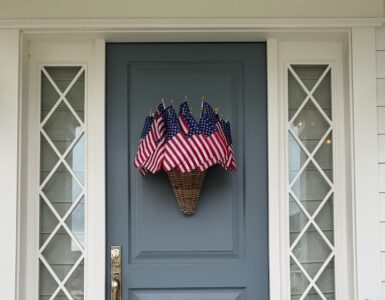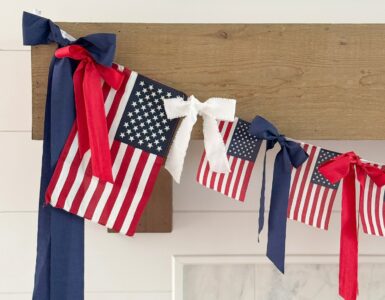We’re turning the Studio 5 kitchen into a Sweet Shoppe to help you make your favorite holiday treats.Today Studio 5 Contributor, Teresa Hunsaker, gives a lesson on Candy 101 with everything you need to get started.
This is the time of year when “sugar plum fairies” really are dancing around in our heads. We love this season for all of its yummy foods…and sweet treats are certainly part of it. Even the most novice of cooks like to try their hand at a few of the season’s confectionaries.
Here are some things to help with the process.
Equipment: Candy making does not require a great deal of special equipment, but there are few things that I would recommend.
. A good heavy pan…one that absorbs heat well, has a heavy flat bottom, distributes heat evenly, straight sides, and is large enough to allow for the expansion of cooking ingredients. Candy mixtures usually triple in volume as they cook, so you’ll need a pan that is large enough for the mixture to boil freely without boiling over.
. A good candy thermometer…see NOTE below.
. A wooden spoon….they are sturdy, can handle high heat, and don’t absorb the heat up the spoon like metal can.
. The last thing I think might be nice to have, and I have one myself is a marble slab. Makes the work of cooling your brittles and fondants so very nice.
Sugar: There is quite the discussion abounding as to whether cane sugar is better than beet sugar for candy making. Here is how I figure it, because you will get plenty on both sides, if you are going to the time and expense with your seasons confectionaries, don’t chance it…use cane sugar. It may be a bit more expensive, but there are some recipes, like caramels, that don’t do as well with a beet sugar. So while in some ways sugar is sugar, apparently there is a difference in the way the two behave in some situations. Most brands of sugar now are a cane sugar anyway, so that helps simplify the choices.
Butter: For the best results a good quality butter should be used in candy making….and who can beat the flavor? Margarines and spreads typically do not create the same results/texture as butter. Whether you use a salted butter or an unsalted butter, the choice may be yours…unless a recipe specifies one or the other.
Chocolate: When selecting a chocolate for dipping your candies there are plenty to choose from.
1. Regular chocolate-made from moderate quality cocoa beans, has a low cocoa butter content, and is low in price. Typically found as chocolate chips or as baking chocolate. It is thick in the melted state and is not great for dipping or molding.
2. Couverture (covering) Chocolate (or ultra couverture)-finest professional quality chocolate with a percentage of cocoa butter. It is a more expensive chocolate that requires tempering. It comes in many price ranges, but will always be more expensive than regular or compound chocolate per pound.
3. Compound chocolate-contains vegetable oil rather than cocoa butter, does not require tempering, easy to use, and less expensive. Many craft/hobby shops even carry this type of chocolate.
Additional Tips and Hints:
· Make candy on clear dry days, weather does make a difference in candy making. On rainy or humid days, the cooking time can increase substantially or your candy may never set up at all. Sugar attracts water, so the humidity can adversely affect your recipe…especially in toffee and divinity.
· Make sure your candy thermometer is accurate.
· Keep the bulb of the candy thermometer at least ½ inch off the bottom of the pan for the best and most accurate reading…adjust the clip for height in
the pan before ingredients go in.
· Don’t scrap the sides or bottom of cooking pans when pouring candy out…just pour.
· Measure your ingredients accurately.
· Make sure your spoon is clean and free from any uncooked sugar crystals before using it to stir and pour the completed candy mixture.
· Wash down the sides of the saucepan to keep sugar crystals from forming…especially important in fudge and toffee. I do this by dipping my pastry brush in water and pass it around the sides of the pan just above the candy mixture…any dripping water into the solution is not harmful to your batch of candy.
· It is not recommended to double candy recipes.
· Make sure you heat and melt your solutions slowly at first, to help keep the sugar crystals from splashing up on to the sides of the pan in the beginning. Once the mixture is melted, dissolved, and in solution you can turn the heat up to finish the cooking. Some people place a lid on the pan and allow the steam formation to wash down the sides…this works too.
· Even clean your candy thermometer if you are taking it in and out of your cooking solution. Be sure it is dry before placing in back in the boiling pot. Water left on it may cause it to crack when it hits the high heat.
· If a candy recipe says to “stir constantly”, stir constantly…it could make toffee separate or other problems to occur. Also, stir without scraping the sides of the pan, especially when making toffee.
· Don’t force cooling in fudge making….allow to cool undisturbed…jarring or stirring in cooling can actually cause the mixture to crystallize or go grainy.
· Most candies can be made in advance and stored for the short term in cool dry conditions…individually wrapped in usually best. Store “like” candies together…candies like caramels, mints, toffee absorb moisture, so you could store them together. Candies like fudge, fondants, and meringues lose moisture, so store these together. If the two are mixed the hard moisture absorbing candies will pull the moisture from the others and become sticky.
· Try not to rush the candy making process…toffee, caramels, sugar syrups all take time to properly cook…forcing the heat way up to speed up the process can mean butter separating from brittles or toffees, burned syrups, etc.
NOTE:
Not always is your candy thermometer accurate, or at high altitudes can you check it for accuracy, so just make it a matter of habit to follow this little practice every day you make your candy using a thermometer…no matter what your altitude…
Let’s say you are making caramels, and the recipe says to bring the candy to 245°-250°F or Firm Ball stage. At high altitudes, like most of Utah, we need to adjust our recipe a few degrees by boiling water and taking the temperature of our boiled water…let’s say it reads 204°F. That is 8 degrees less than the normal boiling point of water at sea level…water boils at 212°F at sea level. So, you will subtract 8 degrees from your candy recipe…245° – 8 = 237°F. Without an altitude adjustment you will be over cooking your candies.
Or, you can decrease the cooking temperature in the recipe by 2° for each 1,000 feet of elevation. For example then, those at around 4500 ft. above sea level (much of the Wasatch front) that would be 8-9 degrees subtracted from your recipe. The candies concentrate much faster at higher altitudes, therefore lower temperatures and shorter cooking times are required.
If you have any questions, contact Teresa Hunsaker at the Family and Consumer Science Education Department at the Weber County USU Extension office at (801) 399-8203 or online at www.extension.usu.edu/weber















Add comment